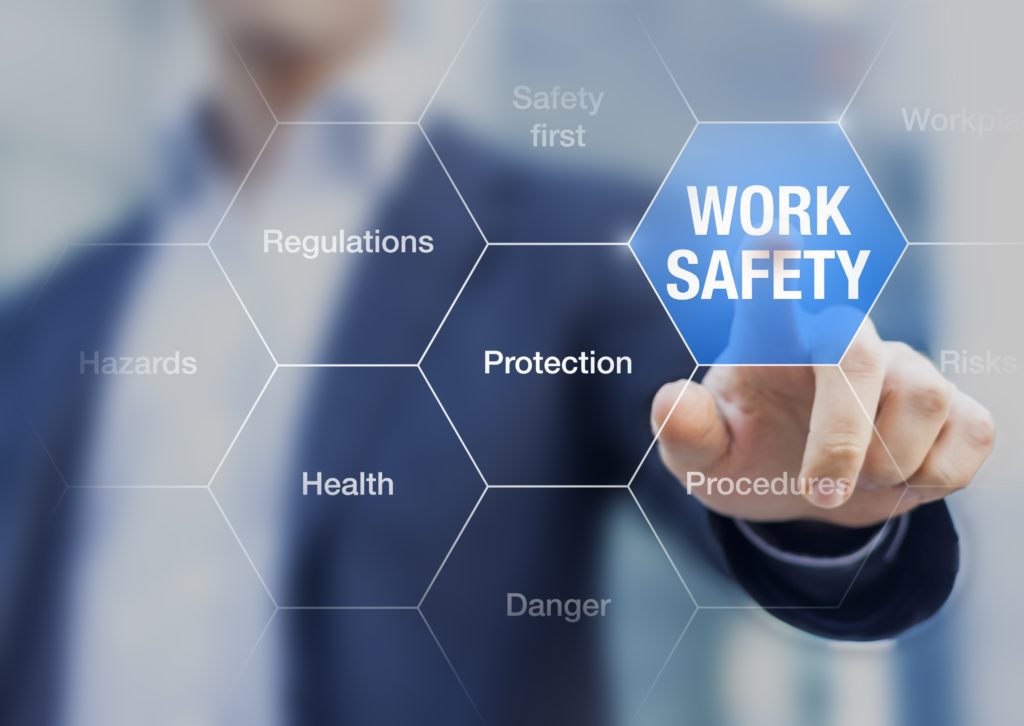It is no exaggeration to say that personal protective equipment (PPE) can make the difference between a someone going home to their family after a hard day’s work, or not. The chances are you will never hear in the media of a worker’s life saved by safety equipment; the headlines tend to be reserved for the more tragic stories, but make no mistake, there are many workers who escape serious injury because of the protection they have been wearing. Of all the measures available to employers to make the workplace a safer place for workers, PPE is surely one of the most effective, cost-efficient, and easy changes to implement.
What is PPE?
PPE encompasses any item of equipment used within the workplace to protect employees from specific dangers to their health and safety. There is a range of legislation which mandates the use of PPE, including the Personal Protective Equipment at Work regulations 1992, the Noise at Work Regulations 2005, and the Control of Substances Hazardous to Health Regulations 2002.
Protective equipment can include gloves, safety helmets, eye protection, high-visibility clothing, safety footwear, harnesses, hearing protection, respiratory protection equipment (RPE), and many other safety devices.
How is suitable PPE assessed?
Every employer has a duty to ensure that they carry out workplace risk assessments to find and manage any risks to the health and safety of their workers. There are many ways by which risks can be eliminated or reduced; PPE is just one of them. And crucially, PPE should be a control of last resort – it should never be a primary way in which risks are managed. For a given risk, for which it is decided that PPE is appropriate, the specific item should be chosen on the basis of:
- Suitability for the environmental conditions – e.g. just because a particular type of safety gloves are appropriate for handling waste, doesn’t mean they provided protection from heat.
- The potential for the item of PPE to add a new risk to the worker – e.g. if a mask is needed to prevent inhalation of dust, does this reduce the ability of the worker to communicate audibly, which may in itself pose an added risk in the context of the work task.
- Fitting – if the item meets all of the necessary criteria, but cannot be adjusted to fit all workers, then it would not be acceptable.
- Task requirements – will the item being considered be suitable for the task in hand – e.g. does the pair of gloves allow for safe handling of a material? How long must the item be worn for? Can the worker see clearly when wearing the item?
- Wearing multiple items – if a worker must wear more than one item of PPE, it is vital that they are all compatible – e.g. can safety goggles be worn with a safety hat and/or safety mask?
Policy for the provision and management of Personal Protective Equipment
It is best practice for employers to have a concise and regularly updated written HR policy on the use of PPE. This should be made easily accessible to and read by all employees to ensure that everyone understand the rules regarding PPE in their specific workplace – and the consequences for not adhering to those rules. The policy may outline the following details:
- The relevant laws which relate to the use of PPE
- Who in the workplace has a legal duty to ensure the proper use of PPE
- Definitions
- Signage – making it clear that signage must be used to show when PPE is mandatory
- How to select the correct PPE
- Charging policy – making it clear in most instances that PPE is not paid for by employees
- The policy on training of employees regarding PPE
- Storage and maintenance of PPE
- Who is in charge of PPE for the organisation
The cost of complacency
PPE is not necessarily expensive, and hence there is no excuse for not using it consistently where necessary to reduce the exposure of workers to dangers. However, time and time again we see that accidents happen due to the lack of adequate workplace risk assessments.
In November 2015, Perry Reagan, trading as Toppers Garden Services, climbed up six metres using a ladder. He then proceeded to use a chainsaw to cut a large branch, which then landed on his employee below, severely injuring him. The injuries were so acute, the man was placed into an induced coma, sustained skull fractures, and lost the sight in one eye. The HSE found that Mr Regan was wholly unqualified for the task he was undertaking, and managing and supervising, and had failed to complete any form of risk assessment. No PPE had been made available to workers, and there was no safe system of working according to the HSE inspector who oversaw the case. Mr Reagan was found guilty of breaching Section 3(2) of the Health and Safety at Work Act 1974. He was also handed a 20-week prison sentence (suspended for 18 months) and was ordered to pay costs of £2,000.
If you have been in an accident in your workplace as a result of incorrect, poor fitting, or non-existent PPE, or if you were not given the necessary training and information in the use of PPE, or if there was inadequate signage, then you may be able to seek compensation for your physical, psychological and financial losses. Our solicitors will take the time to listen to the details of your case and guide you through your available options.
At Russell Worth Solicitors we specialise in personal injury claims. If you have suffered a workplace injury and would like a free claim assessment, please call us now on 0800 028 2060 or complete our Online Claim Assessment.


